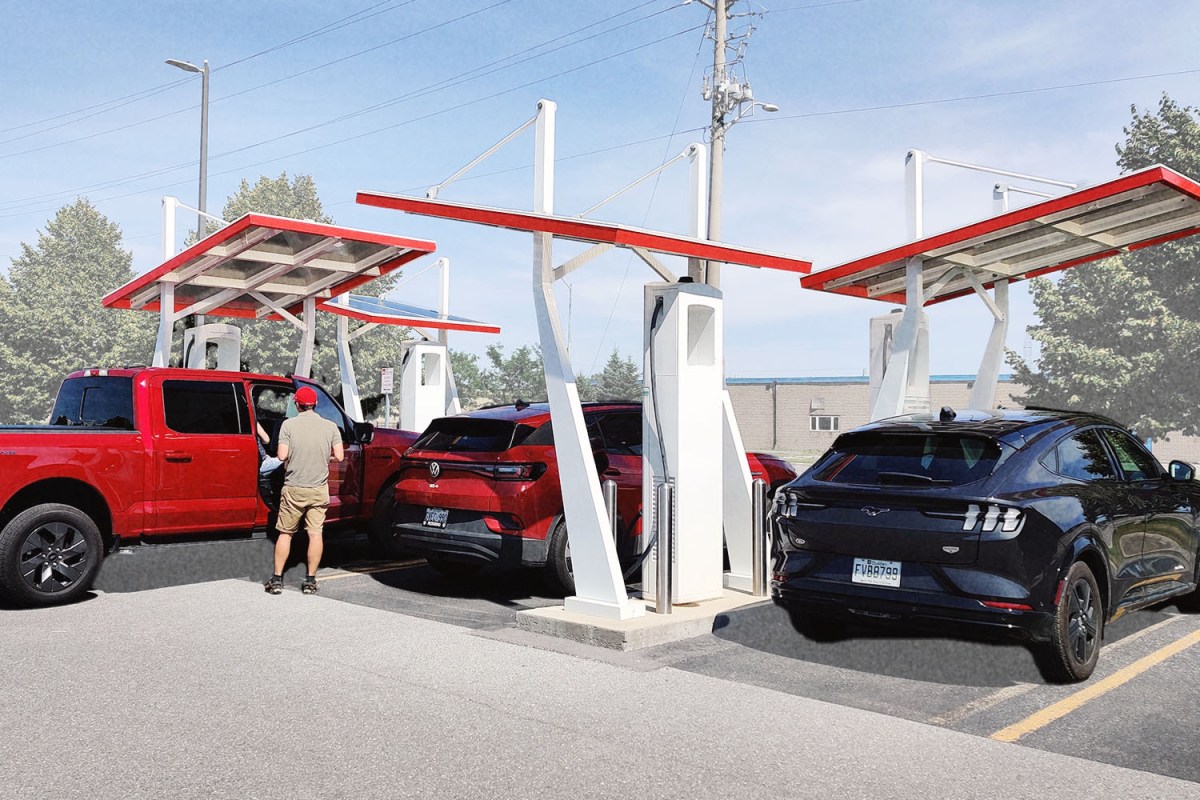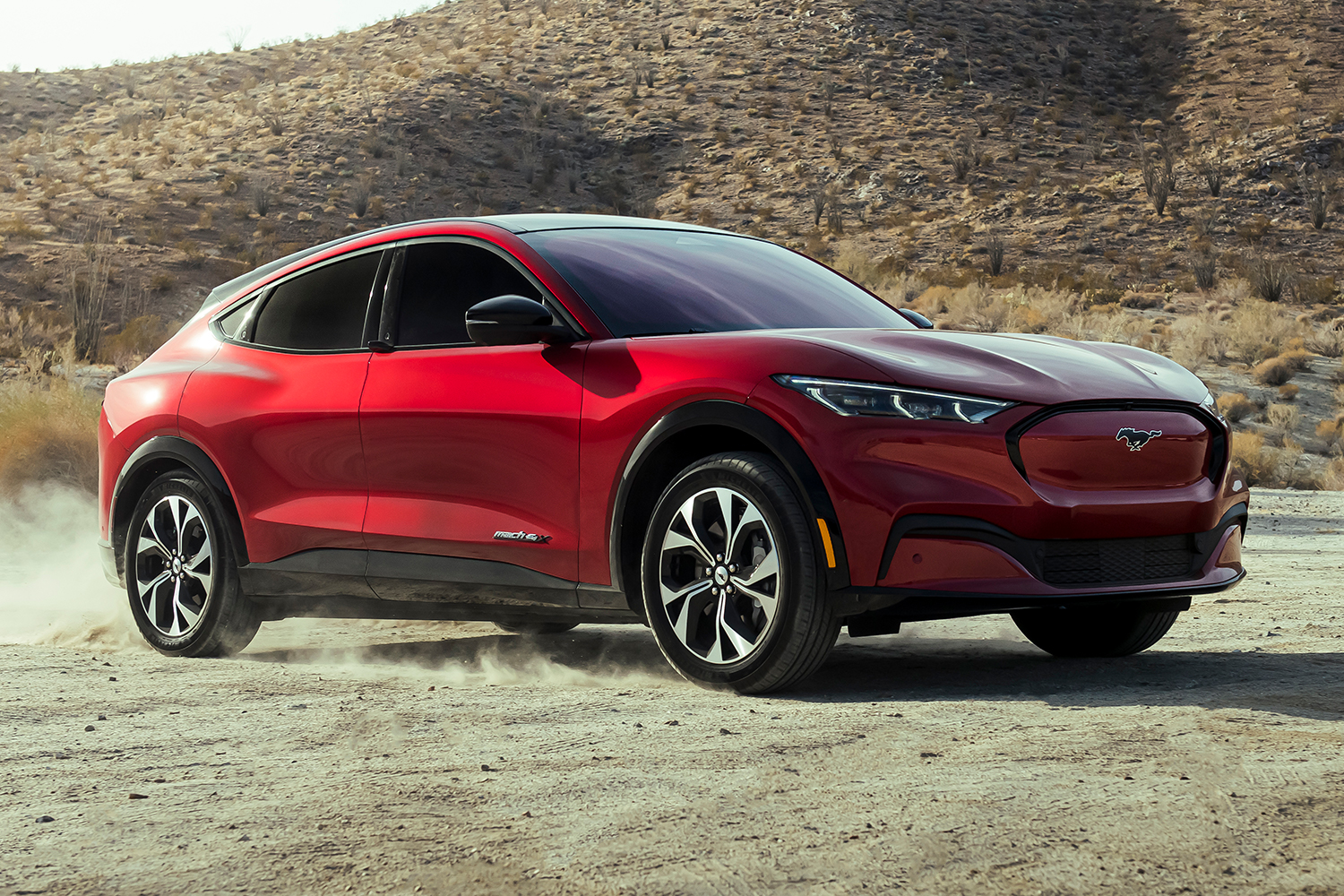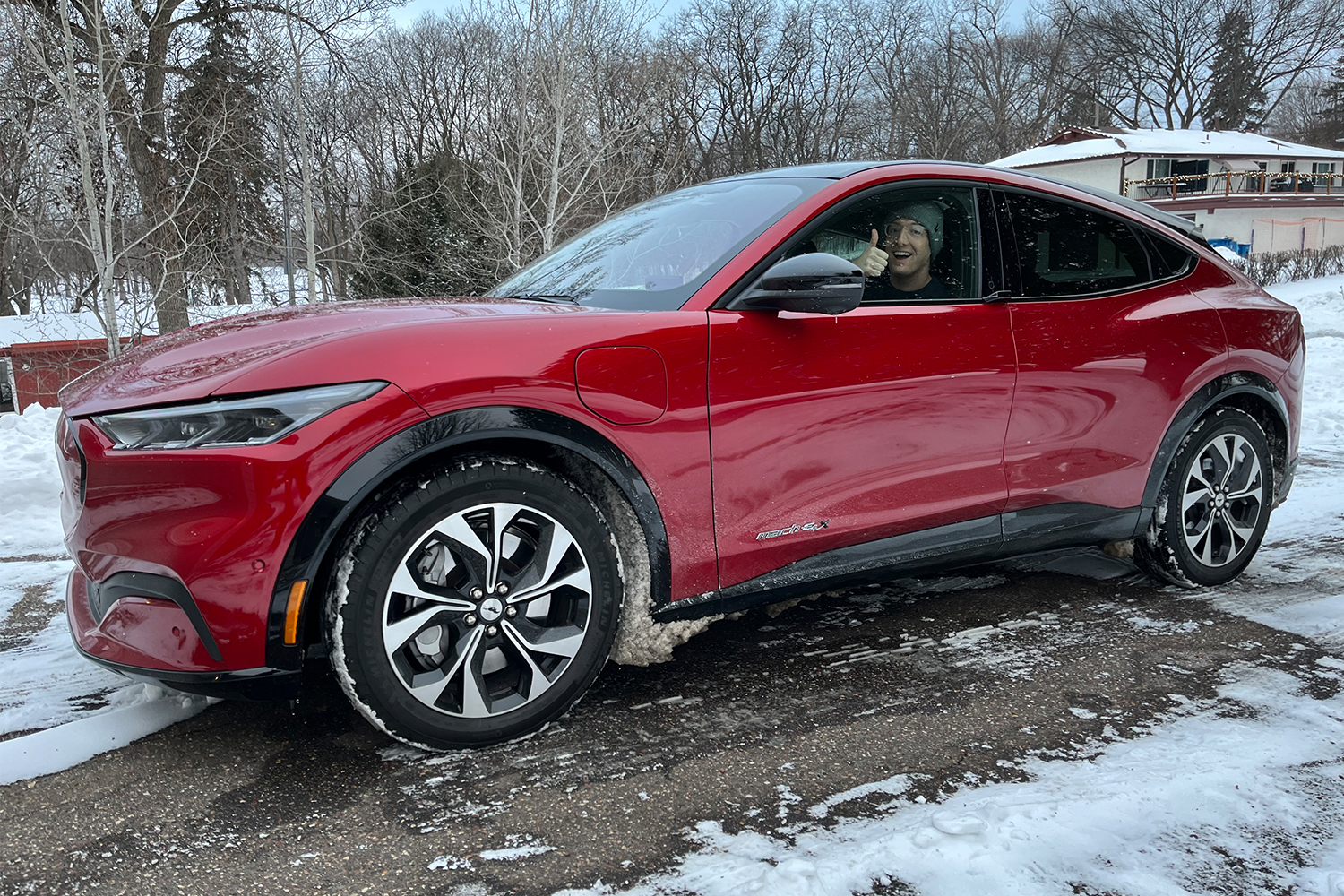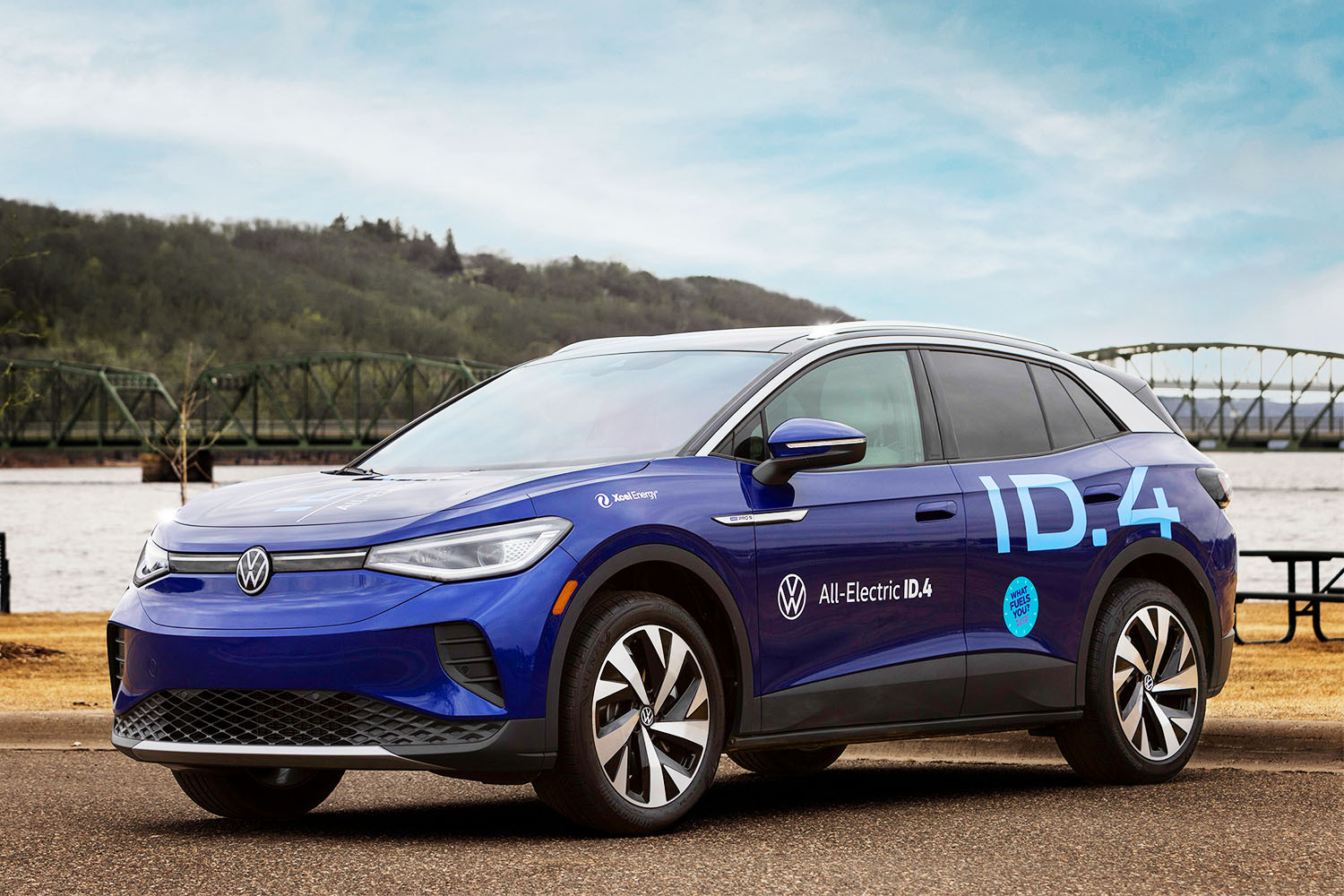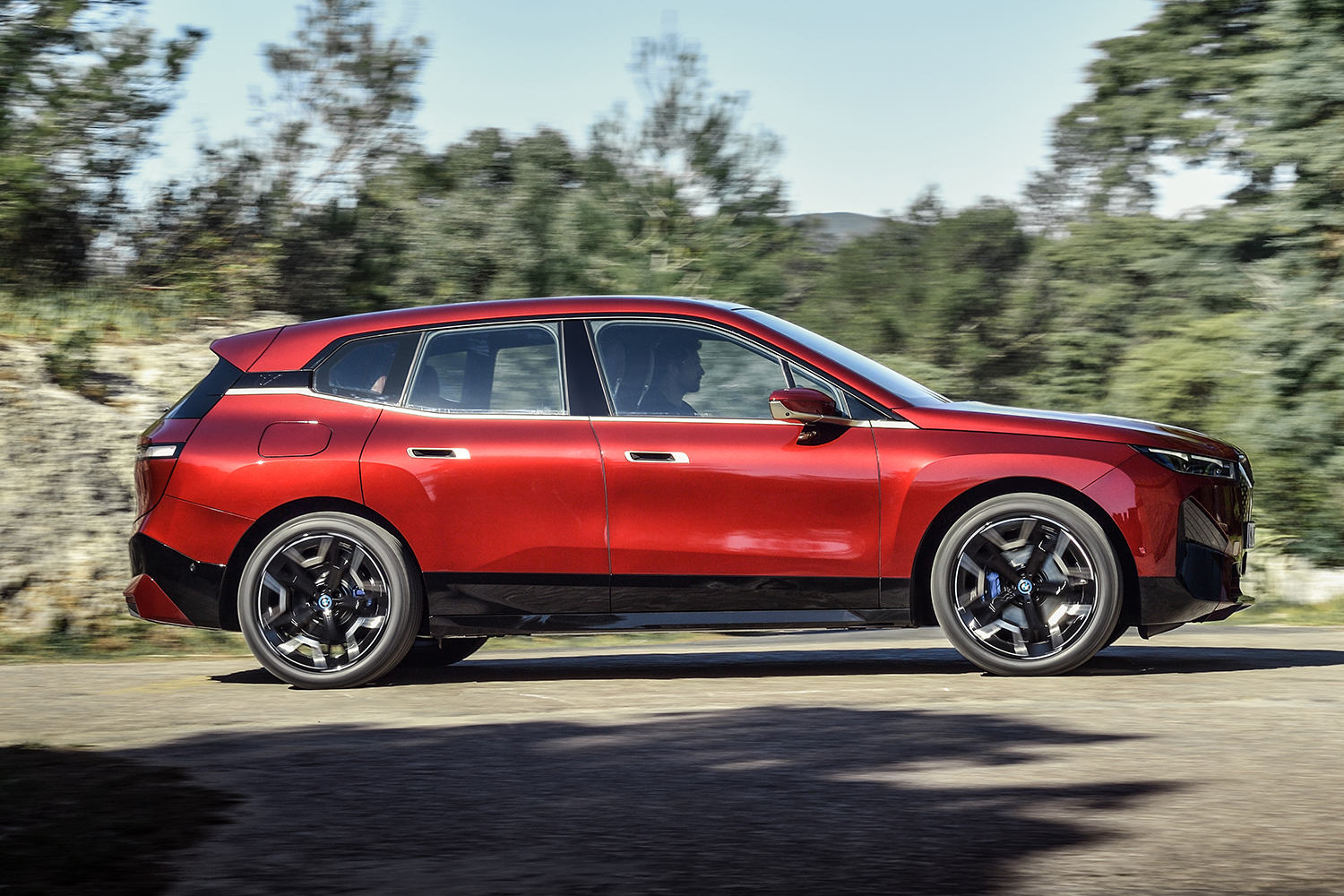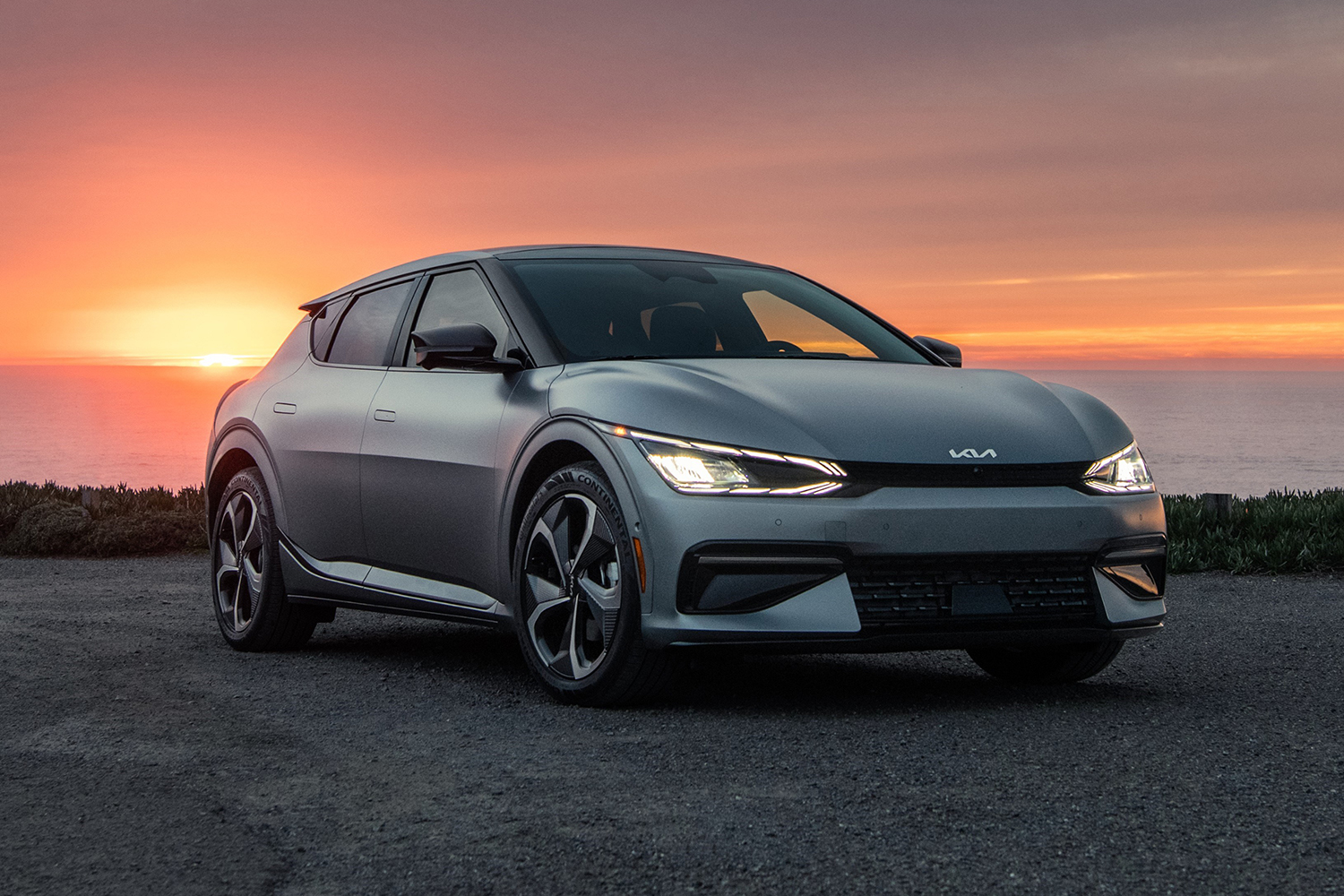The specter of the Great American Road Trip hangs over the EV industry like a looming dark cloud, the ultimate “but what about” argument that is brought up in nearly every conversation concerning the range of modern electric vehicles. Although most battery-powered automobiles offer enough juice to cover the daily driving needs of 90% of commuters, the suggestion that EVs truncate one’s freedom to aim towards the horizon and get away from it all carries significant social weight.
It certainly doesn’t help that lazy mainstream media sources have done their best to feed into range anxiety by tapping poorly-prepared reporters to deliver fear-drenched field reports that reveal more about their lack of pre-trip planning and EV understanding than they do about the current state of charging infrastructure and battery capability.
Where does the truth lie? I set out on an electrified road trip of my own, traversing a route I’d taken many times between Montreal, Quebec, and Toronto, Ontario, but this time trading the familiarity of my internal combustion fuel stops for the uncertainty of a charging network that, while advertised as robust, represented an entirely new experience for me.
The corridor between Canada’s two largest cities appeared to be rife with opportunities to plug in and decouple from carbon, and the advertised 312 miles of range from my big-battery, all-wheel drive Ford Mustang Mach-E seemed equally up to the transportation task. As I discovered, however, the delta between smooth sailing and frustrating inconvenience over the course of 800 miles depends entirely on not cutting any corners when it comes to battery top-up opportunities — and on always having a backup plan at the ready should the occasionally flaky tapestry of competing charging networks let you down.
Can you comfortably road trip in modern electric vehicles? Read on.
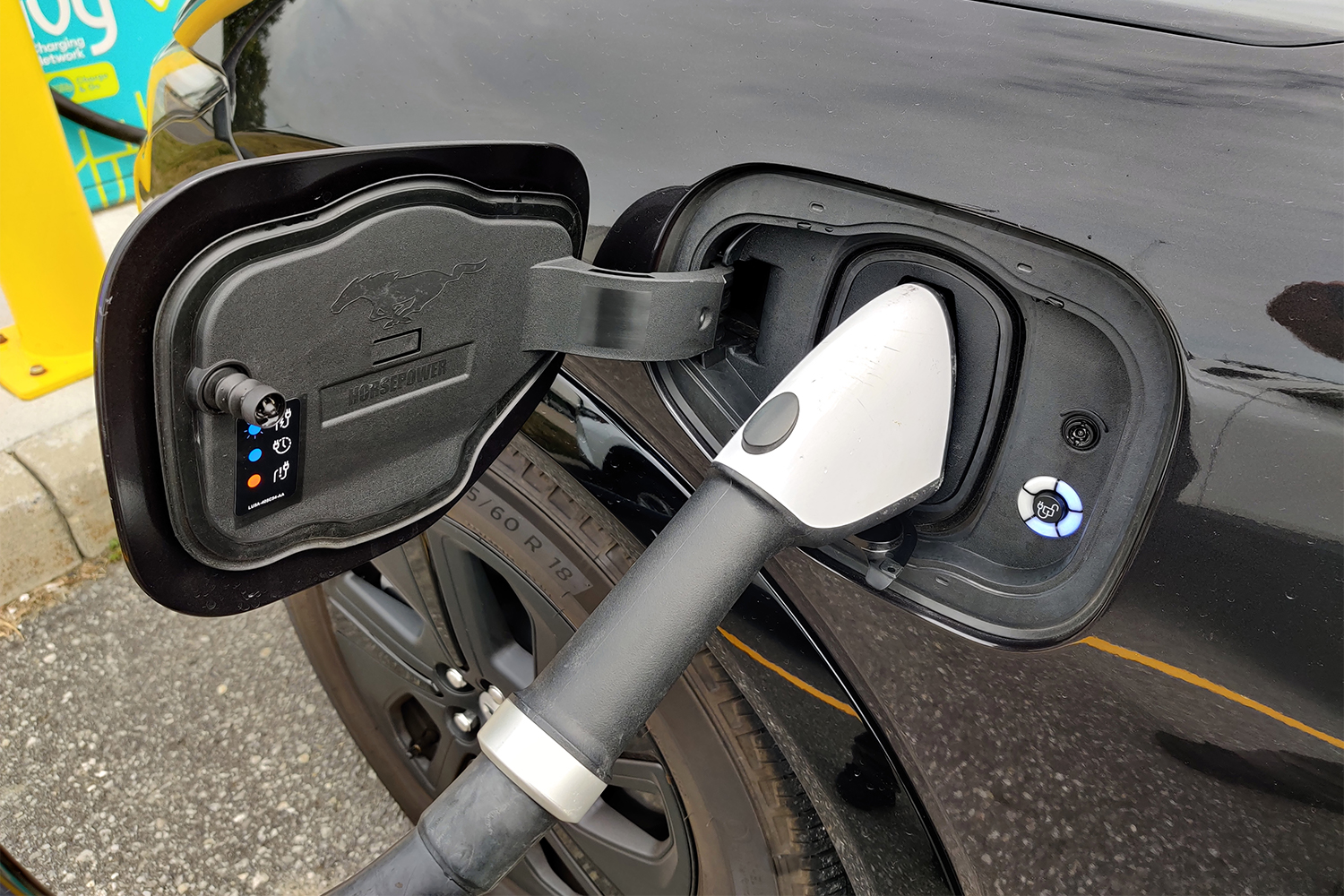
For the Electric Road Trip: Fail to Plan, Plan to Fail
In many ways, this is a tale of two different road trips: the outbound leg, where I decided to wing it when it came to the Mustang Mach-E’s charge state on departure, and the return leg where I did everything in my power (no pun intended) to not repeat that mistake.
I picked up the Ford at 9 a.m. on a Monday morning and noted that it was showing just under 65% charge, which translated into roughly 178 miles of driving before I’d have to find a plug. Given that I’d planned on using Kingston, Ontario, as my midpoint pit stop, and take advantage of a known Electrify Canada location that offered up to 350 kW fast charging, this forced me to recalculate on the fly.
Rather than attempt to stretch the Mustang’s electrons all the way to Kingston, I decided to stop off at one of the several service plazas available along Highway 401 (the primary link between the two cities) and do a brief top-up beforehand. I figured it wouldn’t be much more than a 10-minute break from the drive, given the Mustang Mach-E’s 150 kW charging capability, which could fill its 98.7-kWh battery from 10% to 80% in just 45 minutes. Facing down rain and traffic for most of the morning, it would be a welcome respite.
Roughly 45 minutes later, I’d run the battery down to 51% (with 140 miles of range showing) and pulled into a pit stop at the Bainsville, Ontario Onroute center, one of dozens of similarly-branded, all-in-one food and fuel stops. The Plugshare app I was using showed an Ivy-branded level 3 charger capable of up to 150 kW speeds, which was a perfect match for the Ford’s similar peak rating.
Unfortunately, my hopes for a quick charge-and-dash were scuttled when the available charger refused to connect to the car. After loading cash into the Ivy app and initiating a charging session, the station (which was working well for the Chevrolet Bolt plugged in beside me) failed again and again to actually transfer any electricity. I called the support number on the unit and after a 20 minute conversation with an Ivy tech, who attempted to reboot its software several times, the connection became garbled and we were disconnected.
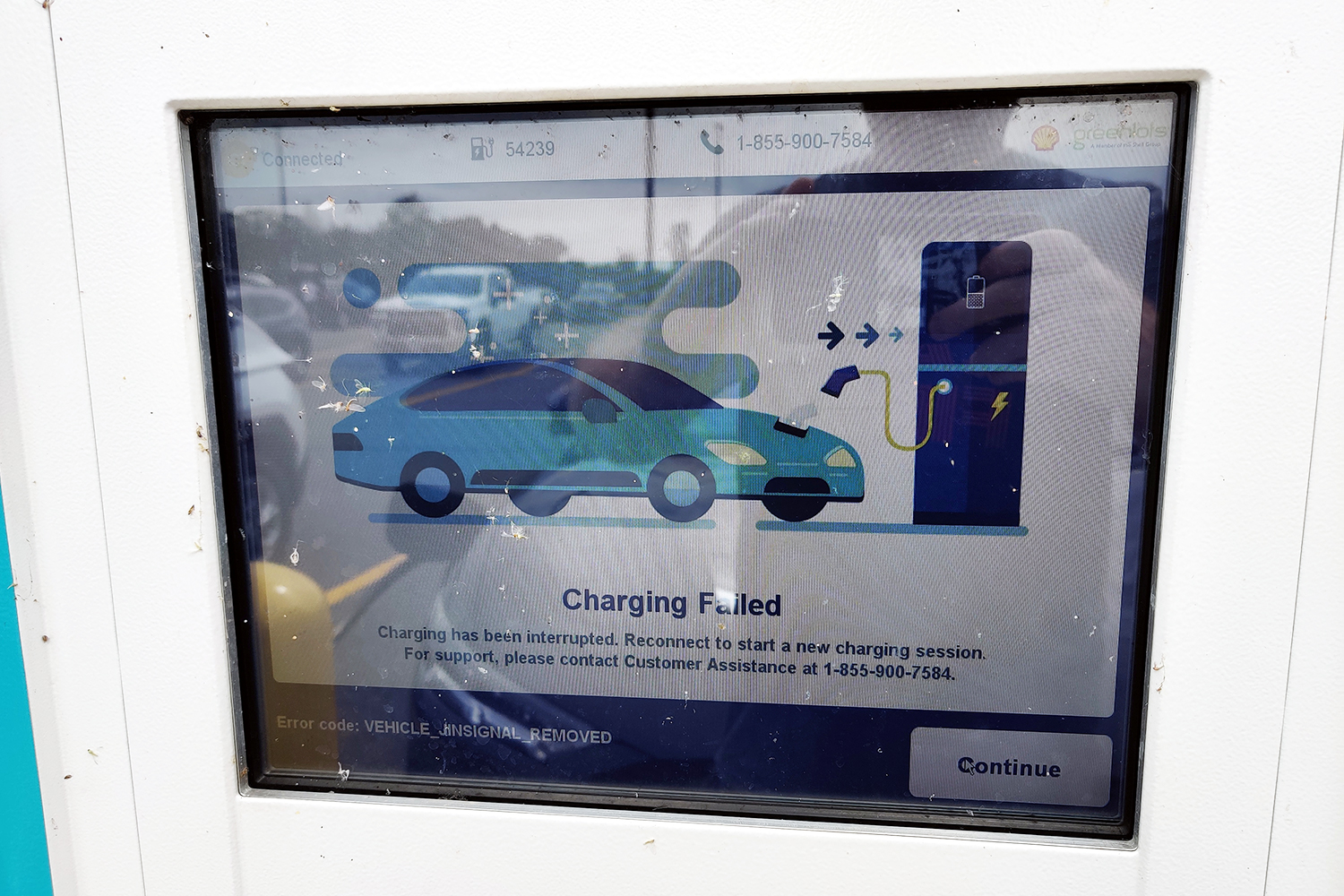
A Backup for the Backup Charger
Having now doubled my estimated time-on-plug, I got back into the Mustang and located an Electrify Canada outpost about 25 miles up the road in the parking lot of a Canadian Tire big box store. It had a positive rating from other Plugshare users, but the downside was it required a 30-minute diversion from the highway to access. Here’s where my traveling companion and I had to make a choice: Did we want to risk that the next convenience plaza would feature a similarly wonky Ivy plug, or did we want to add time onto our trip by pursuing a sure thing?
We decided on the latter. Upon arriving at the Cornwall, Ontario, location for our second charging attempt, I struggled to get the Electrify Canada charger to connect to the Mustang. Fearing that I was now dealing with some kind of vehicle issue, I was rescued by the woman in the (seemingly ubiquitous) Bolt beside me, who had just reached 80% on her own battery and was offering me her plug. “There are not a lot of people with electric cars, and we have to help each other,” she said, echoing a camaraderie I would witness again and again while charging up.
Once attached to the new station, I encountered no further issues. Electrify Canada offers an app but it also makes it possible to pay with a credit card right at the kiosk, which is what I opted to do. Within minutes, the Mach-E was sucking down juice at speeds of 124 kW, which was fast enough to boost the battery to 82% in a mere 25 minutes while I perused the aisles of a nearby grocery store for lunch.
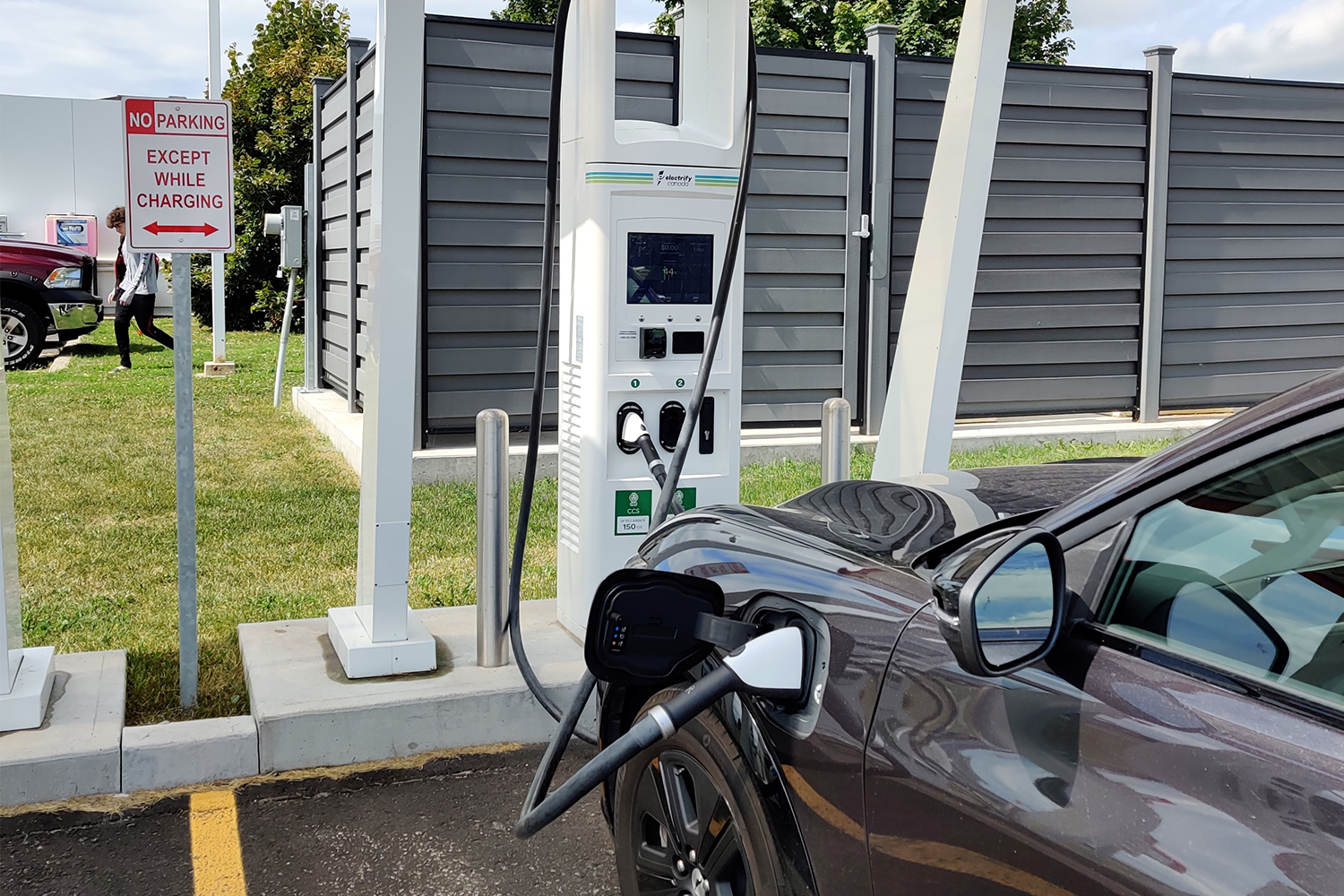
An EV-Charging Wasteland
With 238 miles now showing on the Mach-E’s display, I decided to stick to the original plan and top-up in Kingston. The idea was, even if the Mustang didn’t need that much range to make it to Toronto, it would be good to have it in the pocket for around-town driving if charging in the capital proved difficult.
It proved to be the right choice. A second 23-minute, 123-kW session at the Kingston Electrify Canada outpost gave me enough juice to arrive at my destination in Toronto with about 60 miles of range to spare. I dumped the car in a parking garage and began to hunt around for nearby charging, which is when I made the surprising discovery that Toronto offers close to zero public EV infrastructure. This is a stark contrast to Montreal, where 7-kW and 11-kW slow chargers can be found matched with street parking every four or five blocks in more densely packed parts of town, buttressed by a fleet of grocery store, shopping mall and gas station chargers delivering faster speeds.
In Toronto, if I wanted to plug in, I’d have to find a private lot and then pay for both the privilege of the parking spot as well as the electricity coming out of the wall. This proved to be the single biggest challenge of my trip, which saw me use a mix of expensive, underground 50-kW plugs managed by Flo as well as an ultra-slow, 6-kW charger available for free at one of Ontario’s electrical utilities where I stashed the car for more than eight hours on a Friday afternoon while visiting with friends. It curtailed how I used the car during the week I spent in the city, in one case causing me to leave it behind on a day trip to Niagara Falls and instead carpool in a gas-powered automobile rather than risk not being able to fill the battery again before I needed to leave for home.
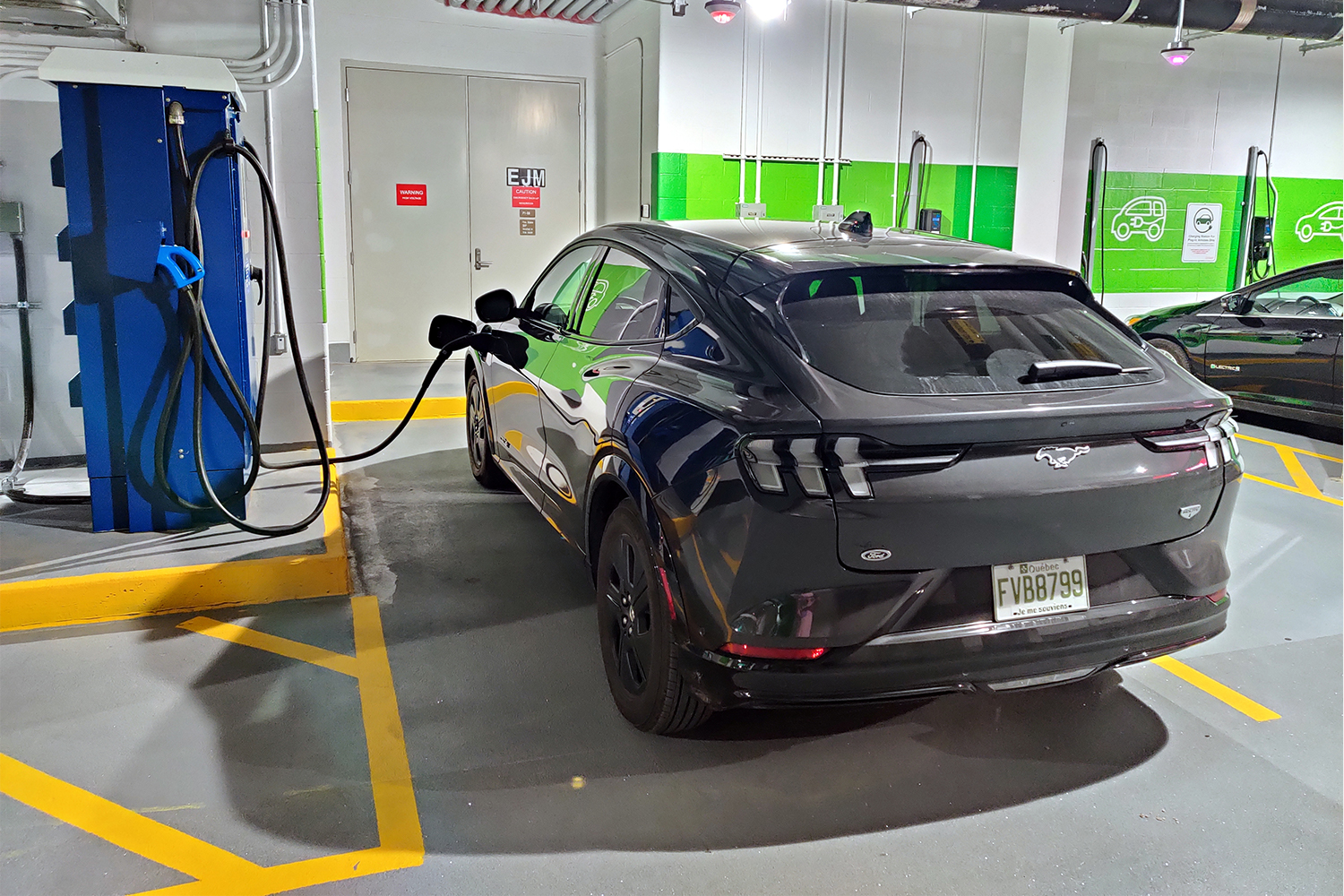
The Smooth(er) Return
Determined not to make the same mistakes I had on the outbound leg, I departed Toronto with 82% showing on the battery meter, which translated into 234 miles of driving — more than enough to make Kingston an attainable goal this time around.
The one-stop strategy worked out, and I actually plugged into exactly the same charger I had used a week beforehand. This time, I was better prepared, with a car full of snacks and lunchables to tick away the time required to move from 21% back to 80%. Strangely, however, the charge rate was considerably slower than it had been the last time, topping out at 80 kW, or only three-quarters as fast.
There was one other vehicle using the station the entire time I was there, with a third (a Ford F-150 Lightning) swooping in for a quick 15-minute splash. It’s possible that the station was unable to meet the power demands of all three vehicles at a higher charge rate, splitting the juice, but I was still surprised by the inconsistency. It took 40 minutes to go from 21% to 80% at the reduced charge rate, but that was enough to get me home with 13% still showing on the battery when I rolled to a stop later that evening.
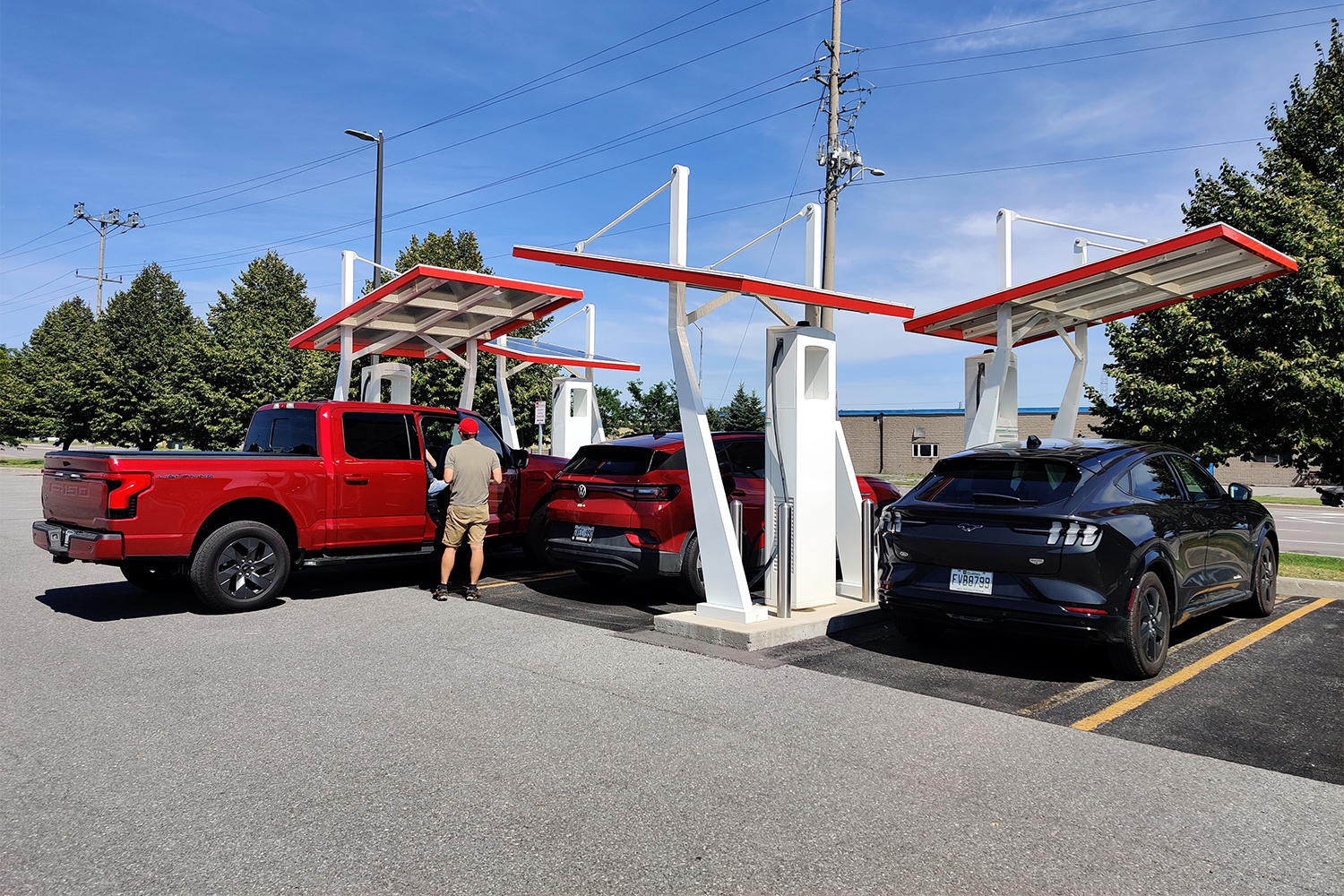
The Pros and Cons of an Electric Road Trip
There are several takeaways when comparing my EV road trip to the experience of traveling the same route using a gas-powered car. By far, the greatest delta was the time required to accomplish the journey. Given my reluctance to take a chance on potentially non-functional travel plaza chargers, having to head into town and back added 30 minutes on top of the 25 to 40 minutes of charging required to hit 80% battery.
With two stops on the way into Toronto, that translated into an extra two hours of travel time compared to the 10-minute gas station fill-ups I was used to, extending the time-in-vehicle from 5 hours to 7.5 hours (including the failed Ivy charge attempt). On the way home, even dropping to a single stop still required an extra hour as compared to an internal combustion engine vehicle.
A better prepared driver (or someone who was able to charge at home prior to the trip) wouldn’t have left Montreal with anything less than 80% battery, and that second stop is entirely on me. I also should have looked harder at the owner check-ins available via the Plugshare app to make sure that the chargers I was targeting were in good working order. It seems unreasonable to not be able to trust that a charger will simply work when you show up, but on both sides of the border, unreliable charging infrastructure is one of the biggest pain points for EV owners, and it’s necessary to plan accordingly.
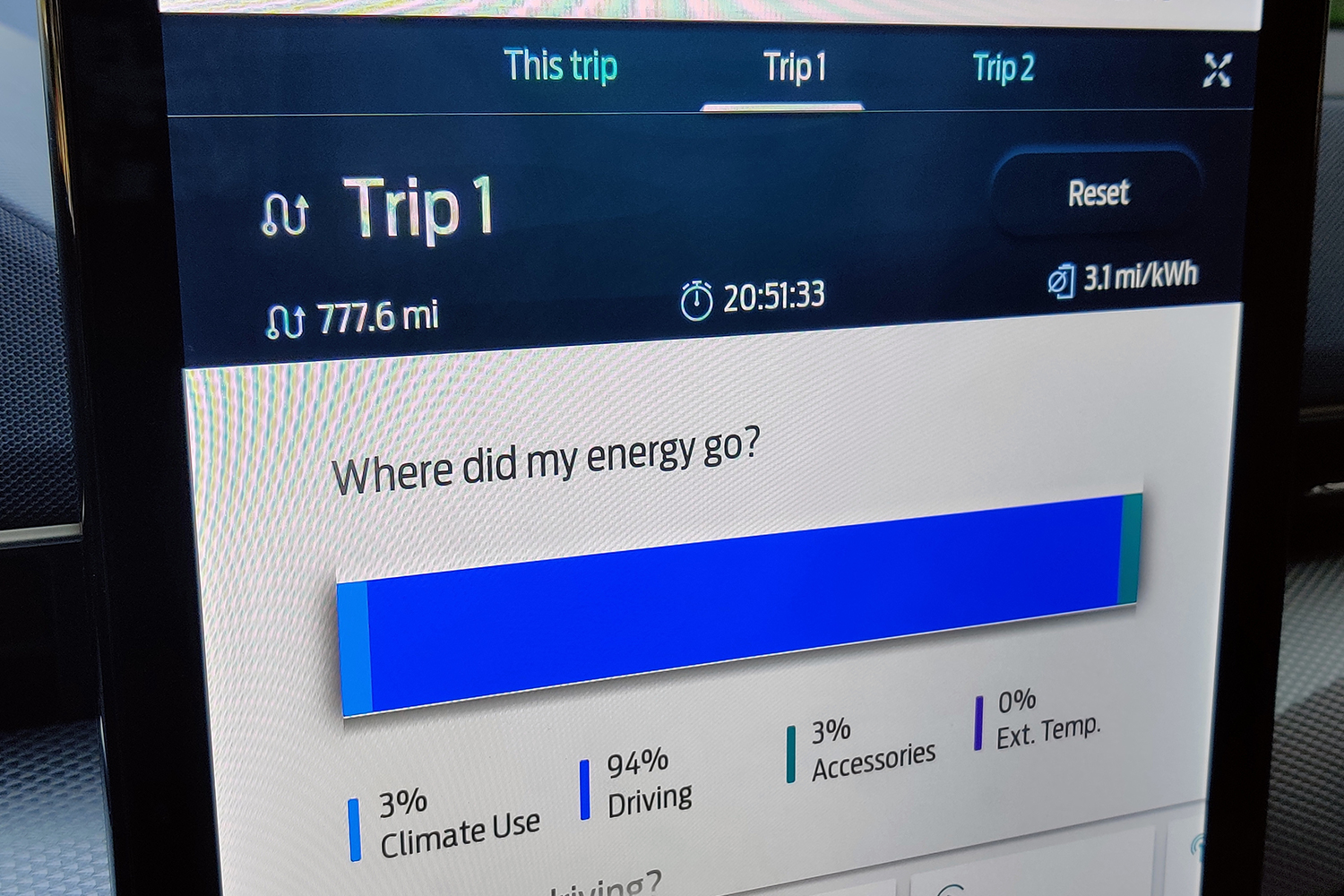
Off the highway, trying to locate a plug in Toronto was truly a hassle, and far different from my own experience in my home city. That’s again entirely on me for assuming that a city much larger than my own would have more, not less, opportunity for EV owners to plug in. Again, research on my side would have gone a long way towards avoiding that problem. It might even have convinced me that an EV wasn’t the right choice for this particular itinerary, given that I didn’t have access to a charging station where I was staying for the week (which seems to be an absolute must for Toronto-based EV owners).
Still, even with these logistical hurdles, I was never in any danger of being stranded at the side of the road, panhandling for a pocketful of lithium-ion. There was always a charger somewhere, as to be expected along the busiest highway corridor in the country, just not with the frequency or convenience we’ve come to expect from gas stations. The entire enterprise also cost me very little: even factoring in paying for parking, I spent about $80 over the course of 800 miles, which is far less than the fuel costs in my neck of the woods.
With planning, an EV road trip is more than feasible, but even an automotive professional like myself can get tripped up by the unexpected when trying to get from here to there in an electric car. This is doubly true when branching out from well-traveled routes and attempting a more rural itinerary, where fast charging might only be a rumor.
“Be prepared” might be better known as the hundred-year-old Scout motto, but it’s well worth tattooing that on the inside of your eyelids should you decide to adopt the future a little earlier than the rest and take the electric vehicle plunge yourself.
This article was featured in the InsideHook newsletter. Sign up now.
